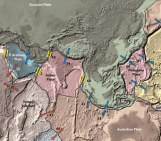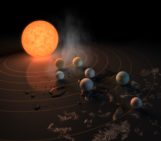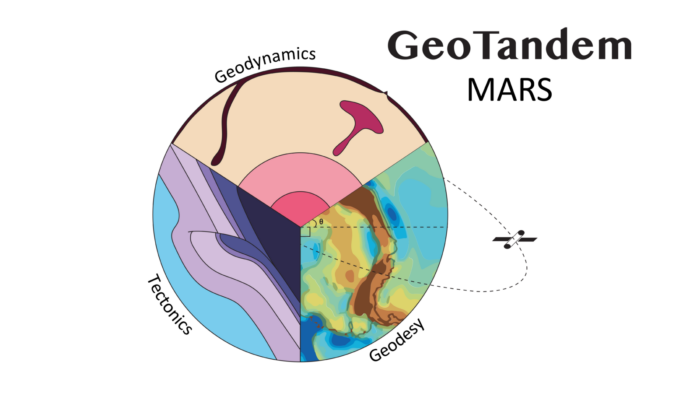
Welcome to the first of its kind, the Geotandem 01! A collaborative series between EGU divisions. Interdisciplinarity is intrinsic to Geosciences, so we want to showcase how researchers approach the same topics from different but also complementing perspectives. In each edition, we will bring you a high-interest topic for the community seen from the eyes of diverse disciplines. Today, the Tectonics & Structural, Geodesy and Geodynamics divisions come together to present one of our favourite planets of the solar system, Mars. How does a collaborative blog work? As simple as it sounds, after reading the first blog, you can access the blogs of the other two divisions by following these links:
Mars’ tectonic style
Earth is currently the only planet we know of that has plate tectonics. Earth’s surface is broken up into pieces like a cracked eggshell and each piece moves around the surface driven by subduction (and destruction) at trenches, and to a lesser extent, creation of plate at mid ocean ridges. Mars however has a solid (and quite thick ~60 km; Fig 1.) crust which still displays volcanism (see our companion post over at the GD blog), but there is no defined plate boundaries like subduction zones and mid-ocean ridges. Just because Mars doesn’t have plate tectonics does not mean it isn’t geologically active. Insight lander recorded a M 4.7 seismic event (Marsquake?) during its mission on Mars (Kawamura et al., 2022). Furthermore, Mars’ surface is marked by faults, mostly around the Tharsis volcanic province. These faults can activate to cause quakes, and this one was located at Cerberus Fossae South East of Olympus Mons. Meaning Mars was and still is quite geologically active!
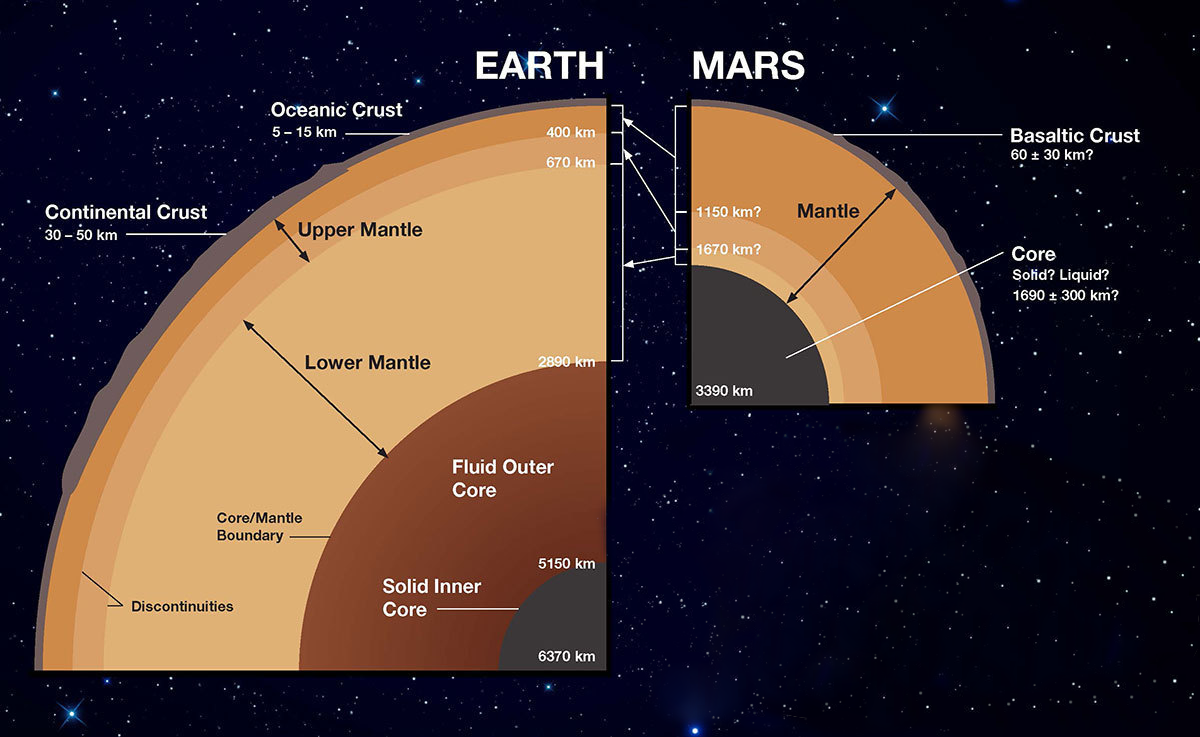
Fig 1. Internal structure of Earth and Mars (image credit: NASA/JPL)
Did Mars ever have plate tectonics?
Nimmo & Stevenson (2000) argue in Mars’ early history for the first 500 Million years after its formation Mars had “plate tectonics”. They argue that Mars had sufficient internal convection to cause enough of a thermal differential between the core and the mantle to allow core convection allowing for a magnetic field, and that this early epoch of plate tectonics, followed by a later epoch of stagnant lid regime explains the Martian dichotomy, i.e. the stark difference between elevation and morphology of the Martian northern hemisphere and southern hemisphere. While it is still argued that mantle convection caused the Martian dichotomy to form (Golabek et al., 2011; and the Geodesy companion blog), it is unlikely that the red planet ever had plate tectonics as we would recognise it today on Earth.
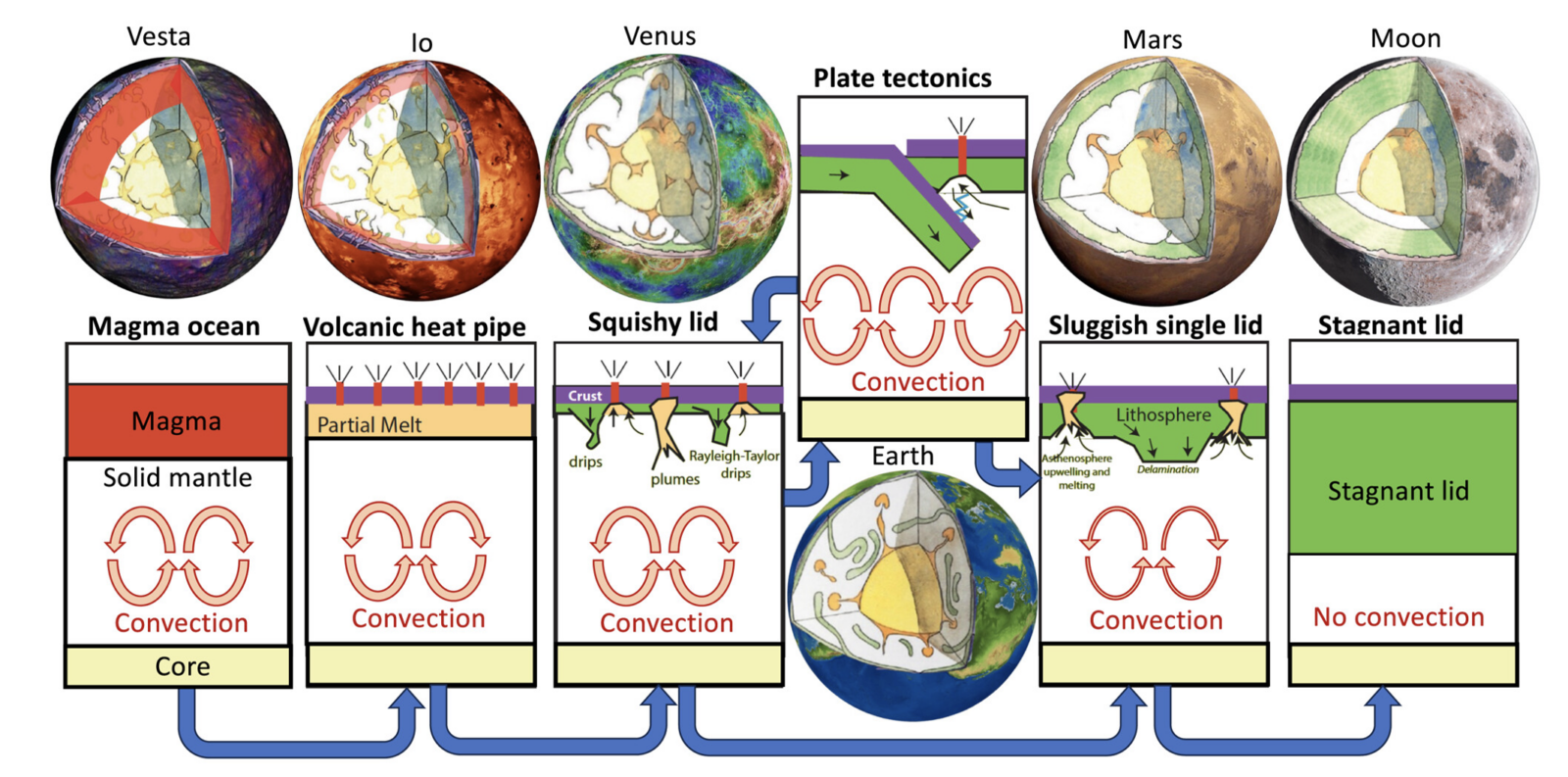
Fig 2.Tectonic styles of rocky planets and moons in our solar system (credit: Stern et al., 2023)
The modern theory of plate tectonics argues that the ocean plates on the surface of the Earth are not driven by mantle convection but rather they are the surface expression of the mantle convection. Rather than the convective cell pushing and pulling the ocean plates, the ocean plates are part of the convective cell, reaching the surface at ridges, flowing across the surface of the planet and then sinking back into the mantle at subduction zones (Duarte et al., 2023). On Mars the mantle convection is more decoupled from the surface of the planet however, as the companion blogs will tell you, it does still have mantle convection strong enough to cause surface expressions such as immense volcanism. Another requirement argued to be needed is the presence of surface water (Gerya et al., 2008). Earth’s subduction zones are “lubricated” with water that modifies the oceanic crust as it ages (Crameri et al., 2012). However, Mars is argued to have had a Northern (Boreal) ocean for 1.5 Ga after its formation (Schmidt et al., 2022). If Mars had mantle convection and surface water in the past did it also have plate tectonics? Most likely it did not. This is because even though it had surface water and mantle convection, neither were strong enough to allow plate tectonics to occur. Fig. (2) shows Earth seems to be in a perfect middle ground of having enough internal convection and surface water to allow plate tectonics, Venus has enough convection but no water and Mars doesn’t have enough convection and now also no liquid water oceans.
Another “nail in the coffin” for Mars having plate tectonics could be the material that formed Mars. Planetary formation models suggest Mars was initially starved of material but then got a significant portion of its mass from planetesimals in the outer solar system, catapulted into the inner solar system by the gravity of Saturn and Jupiter (Hansen 2009). This would mean that the overall composition of Mars would have more lighter elements like hydrogen and Sulphur and this is argued to have interfered with the internal heating of Mars (Yokoo et al., 2022) which may have also limited its potential for plate tectonics.
Would Mars be habitable if it did have plate tectonics?
It is probably not a coincidence that Earth, the only habitable planet we know has life, also has plate tectonics (Waltham 2019). Although it is still disputed whether you need plate tectonics to form life, (we go into more detail in this blog post), and it seems that while plate tectonics is not strictly necessary to form life, if you want that life to exist for more than 1 billion years, you do need plate tectonics (Earth has been habitable for about 4.3 billion years and will probably be habitable for another 1.5 billion years i.e. ~6 billion years in total (Waltham 2019). Meaning this doesn’t kill our chances of finding life (or evidence of ancient life) on Mars, it probably just means we won’t find any complex life up there because Mars’ “habitable lifetime” was probably only a billion years or so after it formed.

